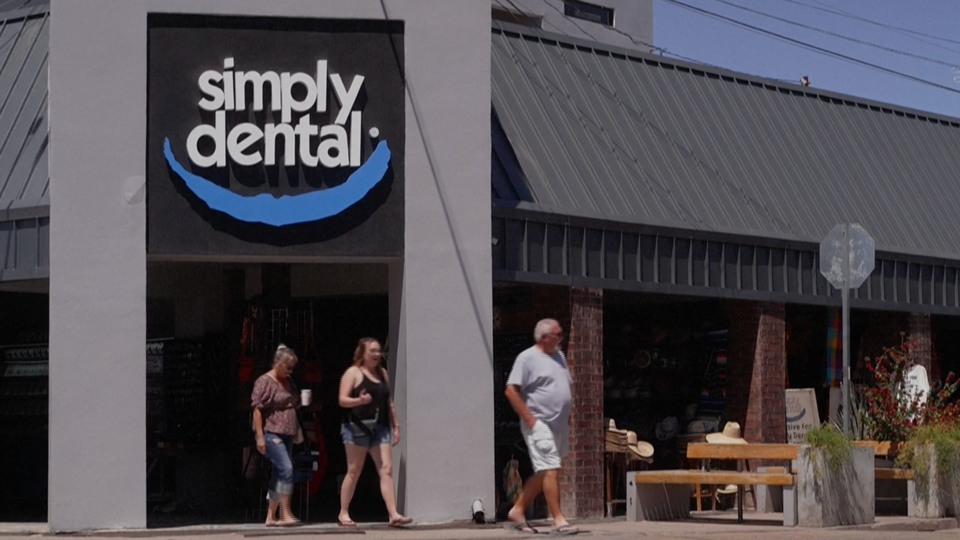Hundreds of thousands of Americans every year go to Mexico's Los Algodones city for cheaper dental care, getting treatment at just a fraction of cost in the US.
Hundreds of thousands of Americans travel across the Mexican border every year to the tiny town of Los Algodones, in search not of sun and sand, but root canals and veneers.
Around 600 dentists cram the four main streets of the town, offering procedures at just a fraction of the cost in the United States.
"It's the highest concentration of dentists per square kilometre in the world," jokes one of the men jostling for customers near the border checkpoint.
Los Algodones is better known to Americans as "Molar City," a nickname that spread by word of mouth long before the internet made shopping around for healthcare easier.
The town long ago embraced the moniker, and now operates a website — molarcity.org — to help potential patients choose doctors and resolve travel logistics.
Competition is fierce, with colourful signs hanging off every balcony, flyers advertising discounts for whitening, extractions and implants.
Despite so many dentists, there is still plenty of demand to go around.
During its November to April high season, Molar City's 7,000 population almost doubles with day-tripping Americans.
Even in the sweltering summer months, around 2,000 people come daily from US border states like California, Arizona or New Mexico.
Cost equivalent to Tesla
A look at any dentist's price list reveals just why the place is so popular.
"In California my dentist wanted to put the equivalent of a Tesla in my mouth," quips Rene, a 65-year-old from California whose first visit to Molar City is for four implants.
"He told me the whole procedure would come out to $57,000," laughs the Uber driver, covering his mouth with one hand.
Dr Carlos Rubio, who trained in both Mexico and the United States, says the huge price differential is what initially attracts customers.
The discount is such, the 63-year-old says, that it more than covers the additional cost of travelling, even if a patient has to make repeated trips for multiple appointments.
US dental care is often funded through private insurance policies attached to employment, usually with annual limits on coverage.
According to the University of Illinois Chicago, around a quarter of Americans have no dental coverage, while public programmes like Medicaid do not routinely cover all forms of dental care.
David Barry, a retiree who has been getting his teeth looked after in Molar City for more than a decade, says many Americans simply cannot afford to see the dentist.
"Most people in the US don't have dental insurance, or their dental insurance doesn't cover very much — like $1,000 a year for a crown or so," he says.
"For something major it's not that great, so when I first came, I needed quite a bit of work -- a few implants and crowns.
"In California they quoted me $35,000. I think I paid about $6,000 or $8,000 here."
The 64-year-old, who now lives in Arizona, says many people have a misperception that dentistry in Mexico is of a lower quality.
In fact, he says: "The equipment here is more advanced. In my dentists at home, they still use impressions — here they do it all electronically."
